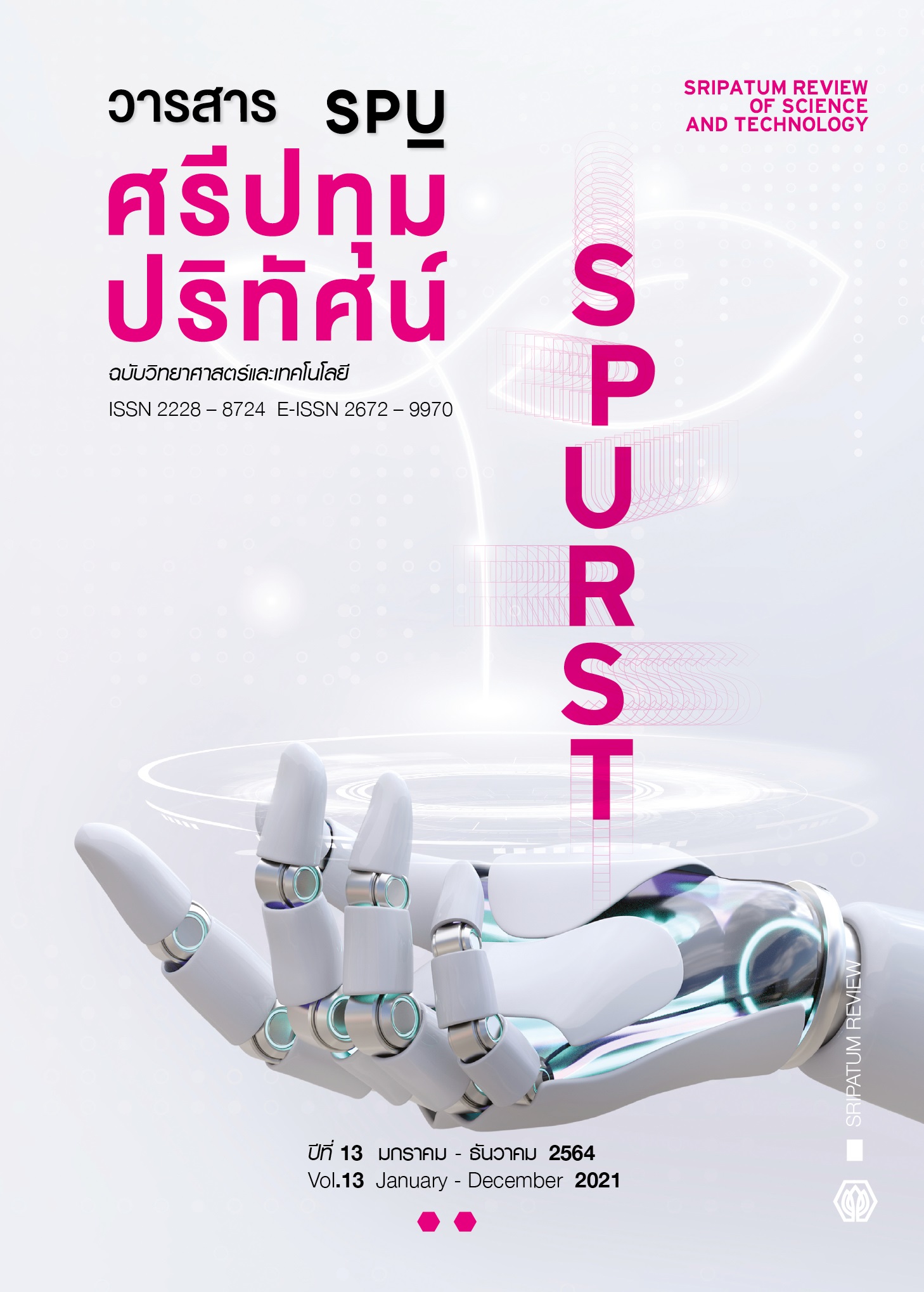Piggery wastewater treatment using SBR system with used inner tube of heavy truck tyre as moving-bed
Main Article Content
Abstract
At present, swine farming has been expanded continuously in responding to increasing demands of both domestically and internationally. Swine farming creates piggery wastewater that is highly polluted, with high organic loading and foul odors causing distress to the community. Most of the wastewater treatment systems used in Thailand are biological treatment systems that occupy a large area of construction and some systems may also cause a disturbing odor. As such, the characterization of piggery wastewater often occurs in batches. So, this research used a sequencing batch reactor (SBR) treatment system that requires less space for construction and uses less energy for the treatment processes. The research aimed at (1) comparing between the conventional SBR system (non-media) and moving-bed sequencing batch biofilm reactor (MSBBR) treatment system using the inner tube of heavy trucks (10 wheels truck) tires as the moving-beds for forming biofilm; and (2) studying the appropriate water retention time (HRT) using a variety of 1.5, 3, and 5 days for treating the wastewater. Biochemical Oxygen Demand (BOD), Chemical Oxygen Demand (COD), Total Kjeldahl Nitrogen (TKN), and Suspended Solids (SS) were analyzed. Research results showed that performance resulted from the MSBBR system was much better than that of the conventional system with the percentages of reduction of BOD, COD, TKN, and SS being 66.7, 86.8, 81.2, and 69.2, respectively. The appropriated HRT was 5 days resulted in the treated effluent concentrations of COD, TKN, SS and pH passing the standard criteria for piggery wastewater control from swine farms.
Article Details
References
Binnima, N. (2006). Wastewater Treatment by Microorganisms with Nylon Fiber Media by sludge System. Thesis of the Degree of Master of Engineering Program in Environmental Engineering. Bangkok: Kasetsart University. (in Thai)
Faculty of Public Health, Mahidol University. (2018). A Study the Pattern of Management of Nuisance Events that are Hazardous to Health in Swine Farming. [Online]. Retrieved September 10, 2020, from: https://bit.ly/31JfsXQ (in Thai)
Helness, H. and Ødegaard, H. (1999). Biological Phosphorus Removal in a Sequencing Batch Moving Bed Biofilm Reactor. Water Science and Technology, 40, 161-168.
Ødegaard, H., Rusten, B. and Badin, H. (1993). Small Wastewater Treatment Plants Based on Moving Bed Biofilm Reactors. Water Science and Technology, 28, 351-359.
Pastorelli, G., Canziani, R., Pedrazzi, L. and Rozzi, A. (1999). Phosphorus and Nitrogen Removal in Moving-Bed Sequence Batch Biofilm Reactors. Water Science and Technology, 40, 169-176.
Pollution Control Department. (2003). Handbook of Selection, Care and Maintenance of The Piggery Wastewater Treatment System according to The Standard Form of The Department of Livestock Development. [Online]. Retrieved September 10, 2020, from: https://bit.ly/3mlfMUP (in Thai)
Sirianuntapiboon, S. and Yommee, S. (2006). Application of a new type of moving bio-film in aerobic sequencing batch reactor (aerobic-SBR). Journal of Environmental Management, 78, 149-156.
Sombatsomphob, K. (2008). SBR Wastewater Treatment. Journal of King Mongkut's University of Technology North Bangkok, 18, 96-103. (in Thai)
Sombatsompop, K., Songpim, A., Reabroi, S. and Inkong-ngam, P. (2011). A comparative study of sequencing batch reactor and moving-bed sequencing batch reactor for piggery wastewater treatment. Maejo International Journal of Science and Technology, 5, 191-203.
Song, X., Yang, X., Hallerman, E., Jiang, Y. and Huang, Z. (2020). Effects of Hydraulic Retention Time and Influent Nitrate-N Concentration on Nitrogen Removal and the Microbial Community of an Aerobic Denitrification Reactor Treating Recirculating Marine Aquaculture System Effluent. Water, 12(3), 650, https://doi.org/10.3390/w12030650.
Temmink, H., Klapwijk, A. and de Korte, K. F. (2001). Feasibility of the BIOFIX-Process for Treatment of Municipal Wastewater. Water Science and Technology, 43 (1), 241-249.
Tuntoolavest, M. (1982). SBR System for Small Industrial Wastewater Treatment. Bangkok: Research and Development Institute of the Faculty of Engineering, Faculty of Engineering, Chulalongkorn University. (in Thai)
US.EPA. (1999). Wastewater Technology Fact Sheet: Sequencing Batch Reactors. [Online]. Retrieved August 10, 2020, from: https://www3.epa.gov/npdes/pubs/sbr_new.pdf.
Young, J.C. and Dahab, M.F. (1982). Effect of media design and the performance of fixed-bed anaerobic reactors. Water Science and Technology, 15 (8-9), 369–383.
Zinatizadeh, A.A.L. and Ghaytooli, E. (2015) Simultaneous nitrogen and carbon removal from wastewater at different operating conditions in a moving bed biofilm reactor (MBBR): Process modeling and optimization. Journal of the Taiwan Institute of Chemical Engineers, 53, 98–111.

